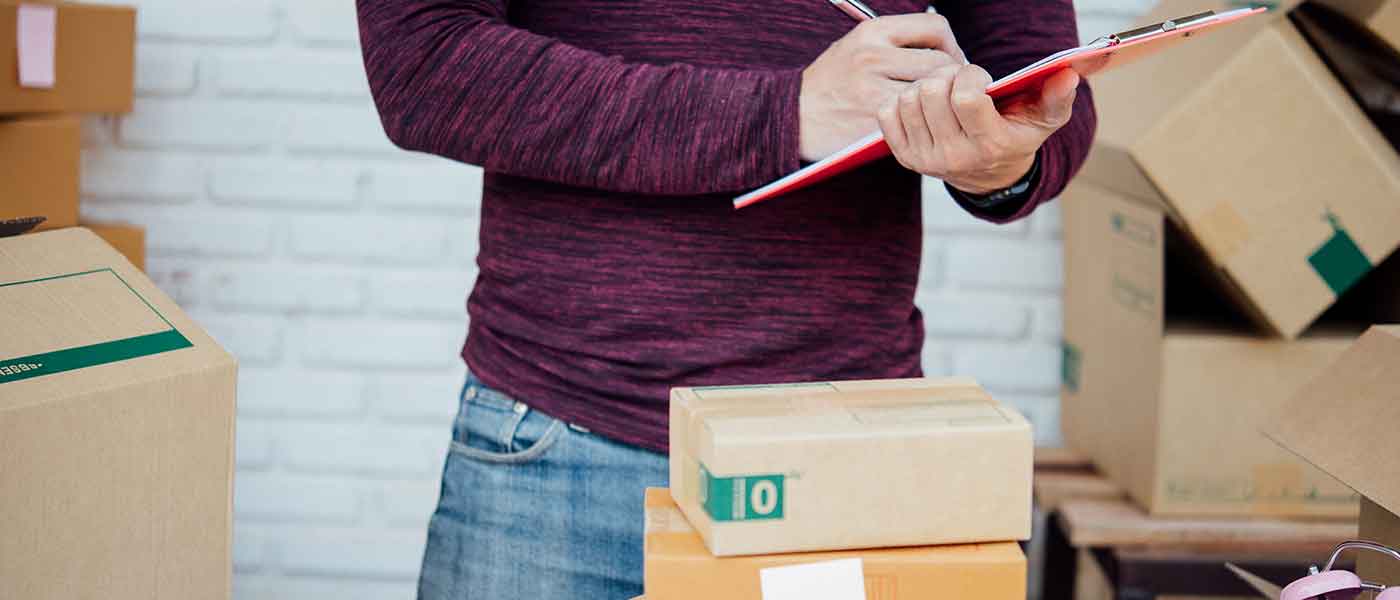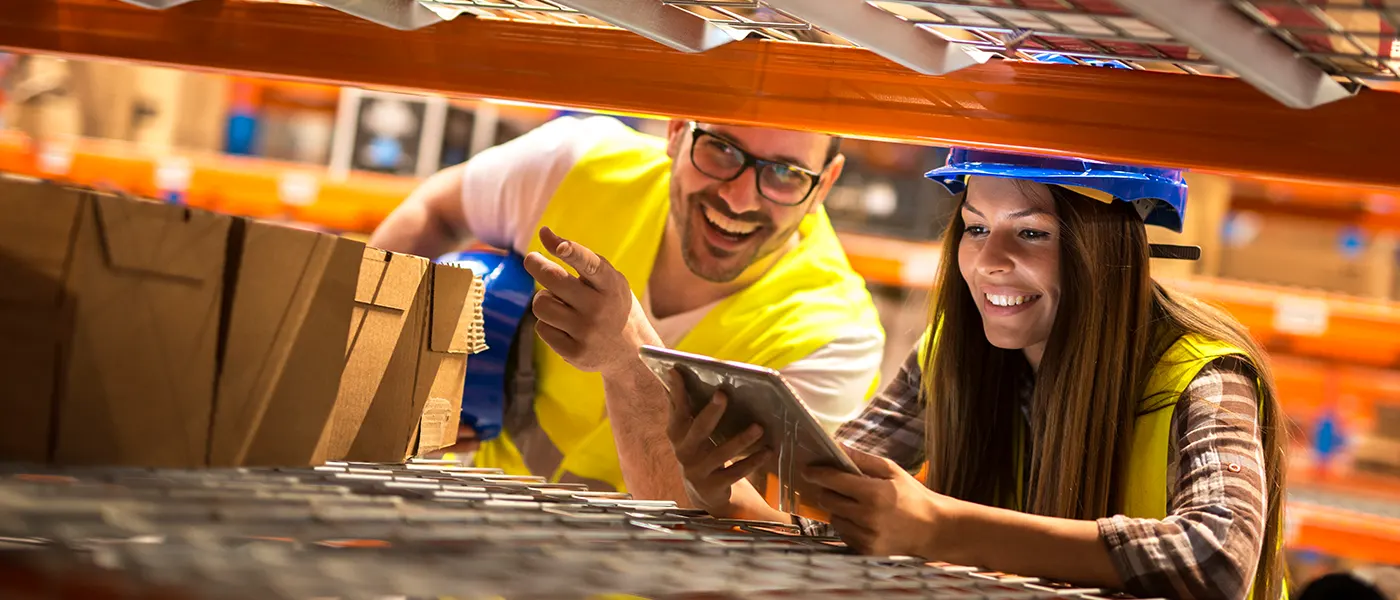What is Order Packing?
The process of packing all products of an order into the appropriate container before shipping it to the customer is known as order packing. It is the second phase in order fulfillment, following the choosing process.
The packing process typically happens at the warehouses and consists of choosing appropriate resources and a suitable container to pack the products, measuring the weight of the package, and marking it with the required invoice or packing slip.
What Makes Order Packing Important?
Here are a few factors why order packaging is essential:
- Protect from harm
Customers must not only receive the right things, but they must also receive them in their prime condition. Defective items cause problems both for the customer as well as the business. For the customer, this involves returning the product and then waiting for either a refund or replacement which can take weeks. This entails recovering the damaged product, providing a replacement, or issuing a refund from the company.
All of this does not bode well for an e-commerce business. As a result, order packaging protects your products from breaking and ensures that they are intact at the time of delivery.
- Cost-effective
Aside from the costs associated with the products being handled, most warehouses incur additional costs. Some of these expenses are set, such as rent and energy, while others, such as the amount spent on packing materials, might vary. How efficiently a business packs its products determines how much they end up spending on packaging materials. Whereas efficient packing is using just the right amount of materials needed to ensure that a product arrives safely to a customer – not too much to be considered a waste of resources and money, and not too little to risk damage to the order. Because this expense is controllable, efficient packaging can lower overall warehousing spending.
Furthermore, if a customer gets a damaged item, they will eventually ask for either a refund or an exchange. This implies that the company would have to spend more money to recover the article while replacing it or issuing a refund. However, effective packaging reduces the likelihood of damage, it reduces the number of refunds or returns due to broker items, saving the business additional expenses.
- Enhance brand image
Most companies that handle their shipping include something other than the invoice and shipping label on their packages to promote their brand identity. It could be the logo of the company, the colors they use, the box design, or another component of the packaging.
Myntra and Nykaa, for example, include their brand names and logos on each box so that customers can identify where the product came from before ever opening it. This type of packaging not only looks good but promotes brand recall and can be utilized as an effective marketing strategy.

Order Packing Goals
First impressions are lasting impressions, as the saying goes. Similarly, the packaging of an order is frequently a consumer’s first introduction to your goods. As a result, producers should never neglect product packaging. The significance of product packaging is multidimensional, and it may go a long way toward ensuring a positive first impression and long-term brand loyalty.
Safeguards the product
Sturdy packaging of a product protects it inside out. A packaging design must protect the goods during transport between its source, pickup hub, and all the way to the customer’s hands. Due to this, product packaging must be durable and dependable. Several businesses pack their products with seals and locks to prevent manipulation and assure the product’s safety and integrity.
Offer value to pricing
With the introduction of bulk pricing and pricing that is proportional to shipping fees, the size of the box used to ship packed items can also have a significant impact on a business’s shipping expenses. Therefore, it’s crucial for a merchant to have boxes that are the right size for their order and charge a fair unit price for their packaging.
Customer retention
Individualized packaging increases consumer loyalty. Customers receiving bespoke packaging are inclined to make future purchases from the same business. This alone is a strong incentive to think about effective personalised ecommerce packaging.
Custom packaging is less expensive to ship, preserves the contents better by preventing instability during shipment, and gives businesses the ability to foster customer loyalty, boost brand awareness, and delight customers by giving them a wonderful retail experience. Customized, even personalized, e-commerce packaging promotes client loyalty and aids in sustaining them.
Include generous amount of safety material inside the boxes
Sufficient safety packing materials, such as foam caps, bubble wrap, polystyrene peanuts, and pellets, should be used.
These support your merchandise during road friction and cushion any additional shocks the package may experience or break during shipping.
Persuades the buyers
When assessing the importance of product packaging, it is essential to consider the consumer’s wants and needs. After all, the fundamental purpose of designing any product is to attract people and urge them to purchase your goods. Because first impressions are so essential in the purchasing process, well-designed product packaging can help you get your product into the hands of purchasers. Picking a particular style and colors that will reach audiences and inspire them to pick up your goods and high-quality packing materials is the key.
The product packaging reflects the product within along with the brand. Many firms research consumer wants and needs when developing product packaging to guarantee their packaging is appealing and engaging.
Distinguishes the product from the competition
The shelves of a store are always flooded with the latest products and packaging. And since many merchants combine comparable products on shelves, distinguishing your products from the competition is imperative. A carefully designed, appealing product packaging is an excellent approach. While the packaging’s size and shape may be similar to the competitor’s, the appearance should be unique. The colors, fonts, and style of your packaging can quickly help distinguish your goods from competitors. Sustainable packaging with a bit of oomph, for example, will attract the consumer’s eye and help set your goods out from the competition.
Different Types of Packaging
Let’s take a closer look at a few types of packaging you may utilize to improve your product and customer satisfaction:
With various packaging and boxing options available in the market, choosing the best packaging solution for the goods might be tricky. Here are some of the popular order packing options:
Boxes made of paperboard
Paperboard is a lightweight, sturdy paper-based material. It is simple to cut and manipulate to create unique shapes and structures. Because of these properties, it is perfect for use in customized packaging. It is manufactured by pulping fibrous materials from wood or recovered waste paper. Paperboard packaging has various qualities, each ideal for a different packaging set.
Corrugated cardboard boxes
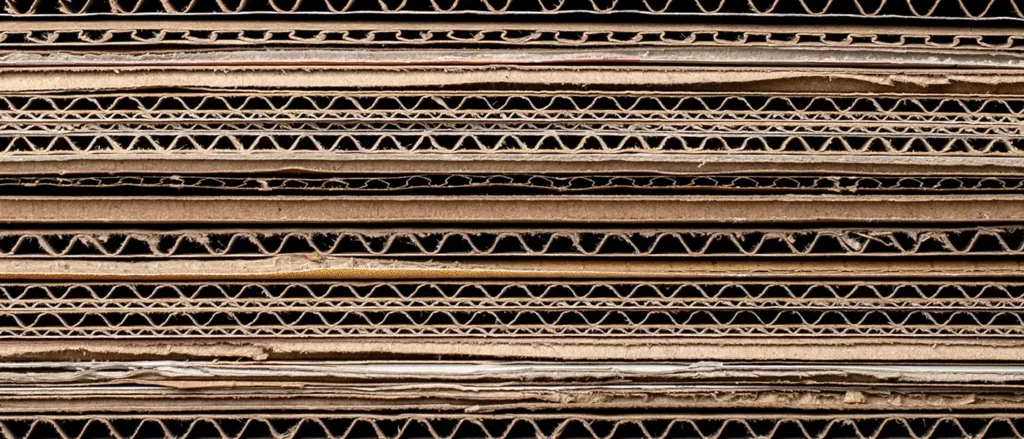
Cardboard is often referred to as a corrugated box. Corrugated boxes are used to make huge shipping. Many individuals are unaware that corrugated boxes are classified into numerous varieties based on their durability and strength. Nevertheless, recognizing a specific corrugated material is straightforward. It comprises three paper layers: an outer liner, an internal liner, and a corrugated medium, also known as fluting. Its strength and stiffness are due to the corrugated media.
Boxes made of plastic
Plastic is used in everything from spacecraft to paper clips. Plastic has already supplanted several traditional materials such as timber, leather, glassware, ceramics, etc.
Plastic box packaging has various advantages, including the ability to be reused, and is often far more robust than cardboard boxes. Plastic wrapping is also not easily broken and can be preserved with food in harsh conditions.
Packaging made of chipboard
Chipboard packaging is utilized in various industries, including medical, electronics, cosmetics, food, and beverages. Chipboard is essentially a sort of paperboard created from recovered paper stock. It is simple to cut, fold, and form. It is a low-cost packaging alternative for your items.
Order Packing Equipment
The method you use to pack an order depends on two significant elements determining shipping costs: how to best secure it and move it efficiently. The ultimate purpose of packaging is to meet both goals, keeping the product as safe as feasible while remaining as cost-effective as possible.
There are lots of packaging options available to fit and protect every product on the market, both large and small, some of which are as follows:
Containers:
The box or bag in which your goods are stored is termed a container. Because the unit cost and minimum quantity orders are usually lower than on outer boxes, this is generally an excellent opportunity to include branding components. Plus, if your product is fragile, you’re likely to ship it in its container, protecting your branded packaging from destruction.
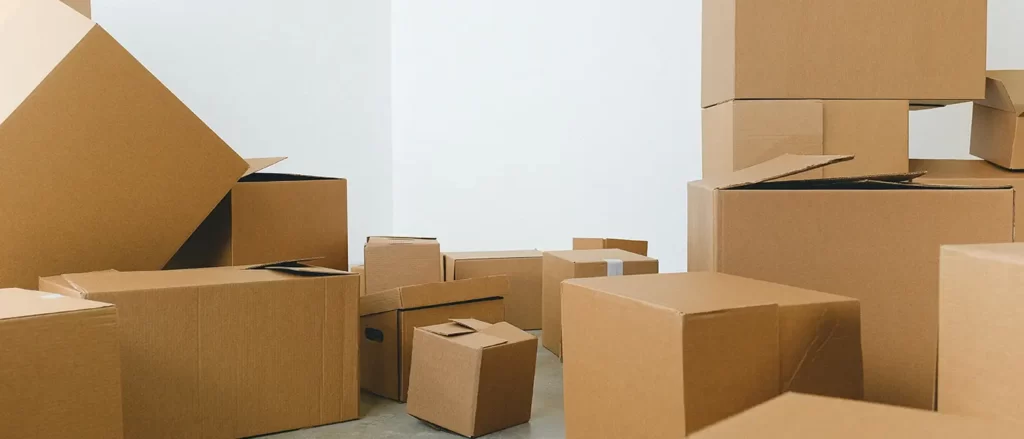
Outer Box:
The norm is to use a cardboard box with numerous layers of material to protect things during shipping. A mailer is typically a folding box that can be closed without using tape. Poly-bags are sometimes used for less fragile products, such as t-shirts. Adding branding to either of these is usually expensive and necessitates a large minimum order number.
Envelopes:
Envelopes are often required to pack smaller, easy-to-wrap products such as jewelry or clothing. They can be conventional, transformed into pseudo-boxes using thicker material, include additional cushioning, and be branded.
Air Assistance:
Inserting air packaging, whether in the form of pillows or a slew of air bubbles, provides a cozy barrier between an order and its container. You can fill the empty spaces with air cushions or line your package with bubble wrap for cushioning.
Tiny Peanuts of Styrofoam:
Styrofoam peanuts are an option for bigger or heavier packages that require a certain amount of cushioning. It can be more inconvenient for customers, but they are convenient for fragile orders. They are sometimes paired with bubble wrap for double protection.
Tape:
Basic packing tape is the most popular type of tape, but there are various options available when selecting a tape and a tape dispenser. Laminated paper tape is a simple, practical, and visually appealing solution to add branding to your outer box at a low cost and minimum order quantity. If you’re just starting out and wish to add your company’s logo to your package, this is a quick and easy method to get started.
Include customized inserts along with the receipts:
It is likely to make an impression if you provide your customers with anything customized along with the receipt inside the package. You can consider putting discount coupons, cutouts, a tiny sample of your upcoming product, etc. You can also enclose a thank you note for being a valid customer, place your receipts in an envelope printed on fancy paper, or lay out your receipts or inserts to be as visually appealing as your goods. This is the most straightforward and least expensive technique to make an impression and attract customers to your brand.
Labels with shipping details:
Shipping labels are an essential aspect of an order’s packaging, even though they are merely slapped onto shipments and do not protect them. While packaging aids in the transportation of the product, labels provide all of the information required by a shipping carrier to accurately convey the order, such as the shipping method and the customer’s address.
The shipping company you opt for will have guidelines for where and how to place a shipping label. However, they like them laid on the top, flat area of order, away from any stitches or closure.
Order Packing Process
The following are the steps in a standard order packaging process:
Step 1:
Packers select a suitable box or container to place the products in once they’ve been picked and transported to the packaging area. As previously said, it is critical to utilize an appropriately sized box to minimize wasted space.
Step 2:
The second step is to pack the product. Packers typically select packaging materials depending on their product type. Glass and other fragile items, for example, require additional padding, such as foam, bubble wrap, or even inflatable cushions, to avoid breakage during transport.
Step 3:
The package is weighed and measured only after the products have been packed, wrapped, and sealed. Packers use this information to build an appropriate shipping label for the package using order management software.
Step 4:
Finally, the parcel is delivered by a courier service. Packers print the shipping label for the shipment and the order invoice and adhere both to the package. When this is completed, the product is ready to ship.
Warehouse Order Packing Best Practices
Here are some of the best practices to be followed in warehouse order packing:
Focus on Service Flow in Warehouse Organization
Arrange the warehouse according to the sequence in which stock passes through each functional department. Every section should logically flow to the next, reducing the need to double back or go through a later step on the route to an earlier one. Hanging sign boards to help employees to locate their workstation, keeping storage locations neat and organized, and ensuring aisles aren’t obstructed or too thin to slow things down.
Create a Receiving Procedure
Implement a receiving and screening process that involves better transparency into shipments, their contents, and timing, as well as increased communication with dock employees about the activities and expectations of each shift. Establishing expected time of delivery, inspecting and sorting items, classifying, and staging them for replenishment or storage, and immediately sending the items on to their location to make sure that pickers are constantly filling orders without delay.
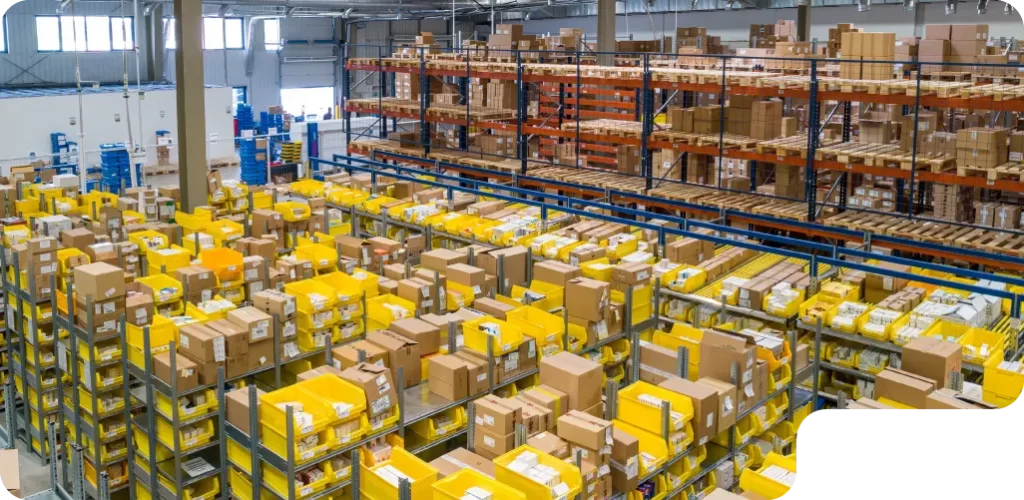
Make Use of Bins, Bags, and Separators
Subdividing inventory with recyclable plastic bins, bags, and separators makes it easier to quickly identify what you’re searching for, whether it’s placed on shelves, racks, or in an automated system. They’re beneficial for sorting and storing large quantities of microscopic goods like nails, washers, and O-rings while also permitting more items to be kept in the same space. Bags, bins, and separators that are appropriately labeled minimize picking time while also keeping their contents safe and tidy from dust, debris, and damage.
Select the Right Picking Strategy
Selecting the right picking technique for the operations, rather than having one employee pick one order at a time, will help accelerate order fulfillment by allowing multiple picks to be completed concurrently. Batch selection is collecting numerous orders containing several of the same goods and sending one associate to complete them in a single trip.
Different workers are assigned to other places in a facility using zone picking, pick and pass, or parallel selection. They choose only the necessary goods from their storage area and place them in a tote, which is then passed to the next phase. The process is repeated until the order is finished.
Wave selecting distributes orders for fulfillment aggregated by specific characteristics such as priority or geographic destination, splitting work into manageable parts while satisfying outgoing carrier cutoff periods.
Create a Returns Management Process
Shopping online is not going out of the window anytime soon. As a result, developing a method for dealing with those returns is crucial. This should contain a specific location and a quality control crew to collect, unpack, and check the items before categorizing them as restocking, repair, returning to the vendor, or recycling. Using an automated warehouse system to store returns before, during, or after categorization temporarily can assist organize and speed up the process even further.
Include Scan Verification
Utilizing automatic identification and data collection technologies such as portable devices, scanners, or camera-based imagers to instantly validate an item based on its barcode dramatically increases accuracy. They scan barcodes written anywhere: on pick lists, individual units, boxes, pallets, bags, and their storage placements to ensure that the item selected by the worker is the correct item required for the order. This decreases human picking errors and accelerates the requirement for a quality inspection afterward.
FAQs
What is order packing?
Order packing is the practice of packing all of the products for order inside an appropriate container before shipping it to the consumer.
Why is order packing important in a warehouse?
The fundamental goal of packing is to reduce damage after an item has left the production plant. The object is subjected to a number of potentially damaging circumstances at the warehouse.
What are packing and delivery?
Package delivery, often known as package delivery, is the single shipment of shipping crates, shipments, or high-value mail.
